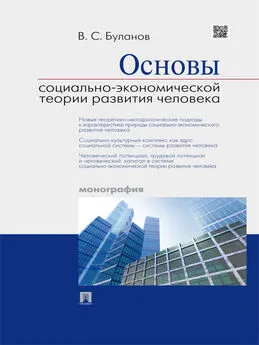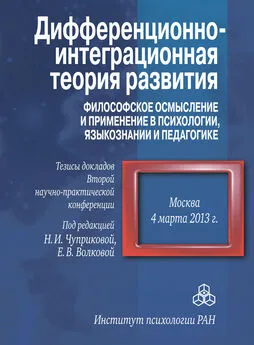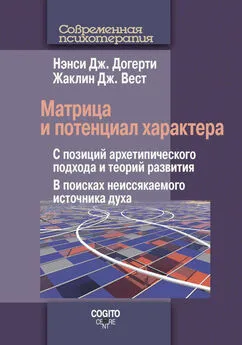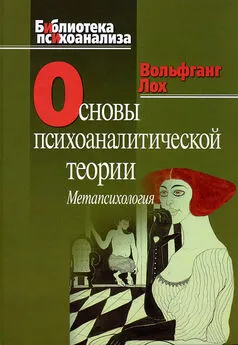Роберт Тайсон - ПСИХОАНАЛИТИЧЕСКИЕ ТЕОРИИ РАЗВИТИЯ
- Название:ПСИХОАНАЛИТИЧЕСКИЕ ТЕОРИИ РАЗВИТИЯ
- Автор:
- Жанр:
- Издательство:Деловая книга
- Год:1998
- Город:М.
- ISBN:5-88687-019-9
- Рейтинг:
- Избранное:Добавить в избранное
-
Отзывы:
-
Ваша оценка:
Роберт Тайсон - ПСИХОАНАЛИТИЧЕСКИЕ ТЕОРИИ РАЗВИТИЯ краткое содержание
Авторы книги, крупнейшие американские психоаналитики, особое внимание уделяют эго-психологии, одному из самых популярных направлений в современном психоанализе. Изданная во многих странах мира, данная книга — новейший свод психоаналитических теорий развития — стала настольной для профессиональных психотерапевтов, психологов и студентов.
ПСИХОАНАЛИТИЧЕСКИЕ ТЕОРИИ РАЗВИТИЯ - читать онлайн бесплатно ознакомительный отрывок
Интервал:
Закладка:
Stein, M. H. (1979). Book Review: The restoration of the self by Heinz Kohut. Amer. Psychoanal. Assn., 27:665-680.
Sterba, R. F. (1942). Introduction. Psychoanalytic theory of the libido, 3rd ed. New York: Brunner/Mazel, 1968.
Stern, D. N. (1974a). Mother and infant at play: The dyadic interaction involving facial, vocal, and gaze behaviors. In The effect of the infant on its careglver. ed. M. Lewis and L. Rosenblum. New York: Wiley, pp. 187-213.
Stern, D. N. (1974b). The goal and structure of mother-infant play. J. Amer. Acad. Child Psychlat., 13:402-421.
Stern, D. N. (1977). The first relationship: Mother and infant. Cambridge: Harvard Univ. Press. Stern, D. N. (1984). Affect attunement, in Frontiers of infant psychiatry. Vol. 2, ed. J. D. Call, E. Galenson, and R. L. Tyson. New York: Basic Books, pp. 74-85.
Stern, D. N. (1985). The interpersonal world of the infant. New York: Basic Books.
Stern, D. N.; Barnett, R. K.; and Spieker, S. (1983). Early transmission of affect: Some research issues. In Frontiers of infant psychiatry, ed. J. D. Call, E. Galenson, and R. L. Tyson. New York: Basic Books, pp. 74-85.
Stoller, R. J. (1968a). Sex and gender: On the development of masculinity and femininity. New York: Science House.
Stoller, R. J. (1968b). The sense of femaleness. Psychoanal. Q., 37-42-55.
Stoller, R. J. (1976). Primary femininitv.y. Amer. Psychoanal. Assn., 24 (Suppi.): 59-78.
Stoller, R. J. (1979). Fathers of transsexual children. J. Amer. Psychoanal. Assn., 27:837-866.
Stoller, R.J. (1985). Presentations of gender. New Haven: Yale Univ. Press.
Stolorow, R. D., and Lachmann, F. M. (1978). The developmental prestagcs of defenses: Diagnostic and therapeutic implications. Psychoanal. ()., 47:73-102.
Strachey, J. (1961). Editor's introduction. In S.E., 19:3-11.
Sutherland, J. D. (1980). The British object relations theorists: Balint, Winnicott, Fairbairn, Guntrip.y. Amer. Psychoanal. Assn., 28:829-860.
Tennes, K., and Lampi, E. (1964). Stranger and separation anxiety in infancy. J. Nerv. Merit. Dis., 139:247-254.
Ticho, E. A. (1982). The alternate schools and the self. J. Amer. Psychoanal. Assn., 30:849-862.
Ticho, G. (1976). Female autonomy and young adult women. Amer. Psycho-anal. Assn., 24:139-156.
Tolpin, M. (1971). On the beginnings of a cohesive self: An application of the concept of transmuting internalization to the study of the transitional object and signal anxiety. Psychoanal. Study Child, 26:316-352.
Tolpin, M. (1978). Self-objects and oedipal objects. Psychoanal. Study Child, 33:167-184.
Tornkins, S. S. (1962). The positive affects. Vol. 1 of Affect, imagery, consciousness. New York: Springer.
Tornkins, S. S. (1963). The negative affects. Vol. 2 of Affect, imagery, consciousness. New York: Springer.
Tornkins, S. S. (1970). Affect as the primary motivational system. In Feelings and emotions: The Loyola Symposium, ed. M. B. Arnold. New York: Academic Press, pp. 101 — 110.
Tornkins, S. S. (1978). Script theory: Differential magnification of affects. In Nebraska Symposium on Motivation. Vol. 26, ed. E. H. Howe, Jr., and R. A. Diestbier. Lincoln: Univ. of Nebraska Press, pp. 201-236.
Tornkins, S. S. (1981). The quest for primary motives: Biography and autobiography of an idea. Personal. Soc. Psychol., 41:306-329.
Tronick, E.; Als, H.; Adamson, L.; Wise, S.; and Brazelton, Т. В. (1978). The infant's response to entrapment between contradictory messages in face—to—face interaction. J. Amer. Acad. Child Psychiat., 17:1-13.
Tronick, E.; Als, H.; and Brazelton, Т. В. (1977). The infant's capacity to regulate mutuality in face-to-face interaction. J. Communication, 27:74-80.
Tronick, E. Z., and Gianino, A. (1986). Interactive mismatch and repair. Zero to Three, 6:1-6.
Tyson, P. (1978). Transference and developmental issues in the analysis of a prelatency child. Psychoanal. Study Child, 33:213-236.
Tyson. P. (1980). The gender of the analyst: In relation to transference and countertransference manifestations in prelatency children. Psychoanal., 35:321-338.
Tyson, P. (1982a). A developmental line of gender identity, gender role and choice of love object. Amer. Psychoanal. Assn., 30:59-84.
Tyson, P. (1982b). The role of the father in gender identity, urethral eroticism, and phallic narcissism. In On fathers: Observations and reflections, ed. S. Cath, A. Glirwitt, and J. Ross. Boston: Little, Brown, pp. 175-187.
Tyson, P. (1986a). Female psychological development. Ann. Psychoanal., 14:357-373.
Tyson, P. (1986b). Male gender identity: Early developmental roots. Psychoanal. Rev., 73:405-425.
Tyson, P. (1988). Psychic structure formation: The complementary roles of affects, drives, object relations, and conflict. J. Amer. Psychoanal. Assn., 36 (Suppl.):73-98.
Tyson, P. (1989a). Two approaches to infant research: A review and integration. In The significance of infant observational research for clinical work with children, adolescents and adults, ed. S. Dowling and A. Rothstein. Madison, Conn.: Int. Univ. Press, pp. 3-21.
Tyson, P. (1989b). Infantile sexuality, gender identity, and obstacles to oedipal progression. J. Amer. Psychoanal. Assn., 37:1051-1069.
Tyson, P. (in press). The adolescent process and adult treatment. The significance of child and adolescent analysis for clinical work with adults, ed. S. Dowling and A. Rothstein. New York: Int. Univ. Press.
Tyson, P., and Tyson, R. L. (1984). Narcissism and superego development. J. Amer. Psychoanal. Assn., 32:75-98.
Tyson, R. L. (1983). Some narcissistic consequences of object loss: A developmental view. Psychoanal. Q., 52:205-224.
Tyson, R. L. (1986). The roots of psychopathology and our theories of development. Amer. Acad. Child Psychot., 25:12-22.
Tyson, R. L. (1989). Psychological conflict in childhood: Adevelopmental view. Paper presented at the Seminar for Clinicians, American Psychoanalytic Association, New York.
Tyson, R. L. (in preparation). The psychoanalysts of the relatency child.
Van Leeuwen, K. (1966). Pregnancy envy in the male. Int. J. Psychoanal., 47:319-324.
Vigotsky, L. S. (1934). Thought and language. New York: MIT Press, 1962.
Waclder, R. (1930). The principle of multiple function: Observations on overdetermination. In Psychoanalysis: Observation, theory, application, ed. S. A. Guttman. New York: Int. Univ. Press, 1976, pp. 68-83.
Waelder, R. (1932). The psychoanalytic theory of play. In Psychoanalysts: Observation, theory, application, ed. S. A, Guttman. New York: Int. Univ. Press, 1976, pp. 84-100.
Waelder, R. (1936). The problems of the genesis of psychic conflict in earlier infancy. In Psychoanalysis: Observation, theory, application, ed. S. A. Guttman. New York: Int. Univ. Press, 1976, pp. 121-188.
Walleretein, J. S., and Kelly, J. B. (1980). Sunning the breakup. New York: Basic Books.
Wallerstein, J. S., and Blakeslee, S. (1989). Second chances. New York: Ticknor and Fields.
Wallerstein, R. S. (1981). The bipolarself: Discussion of alternate perspectives. J. Amer. Pfychoanal. Assn., 29:377-394.
Wallerstein, R. S. (1983). Defenses, defense mechanisms, and the structure of the mind. J. Amer. Psychoanal. Assn., 31:201-225.
Wallerstein, R. S. (1988). One psychoanalysis or many? Int. J. Psychoanal., 69:5-22.
Weil, A. P. (1970). The basic core. Psychoanal. Study Child, 25:442-460.
Weil, A. P. (1976). The first year: Metapsychological inferences of infant observation. In The process of child development, ed. P. Neubauer. New York: Aronson, pp. 246-265.
Weil, A. P. (1978). Maturational variations and genetic — dynamic issues. J. Amer. Psychoanal. Assn., 26:461-491.
Weinshel, E. M. (1970). Some psychoanalytic considerations on moods. Int.J. Psychoanal., 51:313-320.
Weissman, P. (1954). Ego and superego in obsessional character and neurosis. Psychoanal. Q., 23:529-543.
Werner, H., and Kaplan, B. (1963). Symbol formation. New York: Wiley.
Widzer, M. E. (1977). The comic — book superhero: A study of the family romance fantasy. Psychoanal. Study Child, 32:565-604.
Williams, M. (1972). Problems of technique during latency. Psychoanal. StudyChild, 27:598-617.
Winnicott, D. W. (1949). The ordinary devoted mother. In Boundary and space, ed. M. Davis and D. Wallbridge. New York: Brunner/Mazel, 1981, pp. 125-130.
Winnicott, D. W. (1952). Anxiety associated with insecurity. In Collected papers. New York: Basic Books, 1958, pp. 97-100.
Winnicott, D. W. (1953). Transitional objects and transitional phenomena. In Playing and reality. New York: Basic Books, 1971, pp. 1-25.
Winnicott, D. W. (1956). Primary maternal preoccupation. In Collected papers. New York: Basic Books, 1958, pp. 300-305.
Winnicott, D. W. (1959). The fate of the transitional object. In Psychoanalytic explorations, ed, C. Winnicott, R, Shepherd, and M. Davis. Cambridge: Harvard Univ. Press, 1989. pp. 53-58.
Winnicott, D. W. (1960). Ego distortion in terms of true and false self. In The maturation processes and the facilitating environment. New York: Int. Univ. Press, 1965, pp. 140-152.
Winnicott, D. W. (1962a). Ego integration in child development. In Thematura — tional processes and the facilitating environment. New York: Int. Univ. Press, 1965, pp. 56-63.
Winnicott, D. W. (1962b). The theory of the parent-infant relationship. In The maturattonal processes and the facilitating environment. New York: Int. Univ. Press, 1965, pp. 37-55.
Winnicott, D. W. (1965). The maturattonal processes and the facilitating environment. New York: Int. Univ. Press.
Winnicott. D. W. (1967). Mirror — role of mother and family in child development. In Playing and reality. New York: Basic Books, 1971, pp. 111-118.
Winnicott, D. W. (1971). Playing and reality. New York: Basic Books.
Wolf, E. S. (1988). Case discussion and position statement. Plychoanal. Inq., 8:546-551.
Wolff, P. H. (1959). Observations on newborn infants. Psfchosom. Mcd., 21:110-118.
Wolff, P. H. (1960). The developmental psychologies of Jean Piaget and psycho-analysis Psychological Issues, Monograph 5. New York: Int. Univ. Press.
Wolff, P. H. (1966). The causes, controls, and organization of behavior in the neonate. Psychological Issues, Monograph 17. New York: Int. Univ. Press.
Wolff, P. H. (1981). Normal variation in human maturation. In Maturation and development, ed. K. J. Connolly and H. F. R. Prechtl. London: Heinemann, pp. 1-18.
Yakoviev, P. L., and Lecours, A. P. (1967). The myelogenetic cycles of regional maturation of the brain. In Regional development of the brain in early life, ed. A. Minkowski. Oxford: Blackwell, pp. 3-70.
Yasmajian, R. V. (1966). The tesies and body — image formation in transvestitism. Amer. Psychoanal. Assn., 14:304-312.
Yasmajian, R. V. (1967). The influence of testicular sensory stimuli on the dream. J. Amer. Psychoanal. Assn., 15:83-98.
Yogman, M. W. (1982). Observations on the father-infant relationship. In Father and child, ed. S. H. Cath, A. Gurwitt, andJ. M. Ross. Boston: Little, Brown, pp. 101-122.
Yorke, C. (1971). Some suggestions for a critique of Kleinian psychology. Psychoanal. Study Child, 26:129-155.
Yorke, C., and Wiseberg, S. (1976). A developmental view of anxiety. Psycho-anal. Study Child, 31:107-135.
Zetzel, E. R. (1965). A developmental model and the theory of therapy. In The capacity for emotional growth. New York: Int. Univ. Press, 1970, pp. 246-269.
1
На протяжении всей книги мы используем термины «система» и «структура» как взаимозаменяемые. Несмотря на то, что за фрейдовской окончательной моделью психики закрепилось название «структурная», ее, тем не менее, допустимо рассматривать в рамках системного подхода, описанного нами в первой части, при котором структура рассматривается как относительно стабильная и медленно эволюционирующая система.
Читать дальшеИнтервал:
Закладка:










